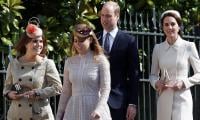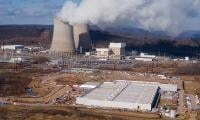ISLAMABAD: The parliament, political parties, Election Commission of Pakistan (ECP) and civil society must join forces to enhance participation of women as voters and candidates in the electoral processes.
This consensus emerged during the launch of Free and Fair Election Network (Fafen)’s report, “Women in Elections”. The event brought together sitting and former women parliamentarians belonging to different political parties, civil society, election experts and journalists
The participants emphasized need for electoral reforms to enhance women’s participation as voters and candidates. They highlighted importance of promoting intra-party democracy to ensure women’s meaningful and equitable involvement in political processes.
Speaking at the event, Fafen National Council member Anbreen Ajaib stressed urgency of electoral reforms to ensure gender parity. She described narrowing gender deficit as a promising step, but said much work remains to be done to achieve equitable representation for women in political sphere.
Kanwal Mehmood of Fafen presented the report’s findings, highlighting a significant rise in women’s participation as voters, polling staff and candidates. She revealed women cast 24.4 million of 58.9 million total votes in GE-2024, marking an increase of 2.7 million compared to GE-2018. This growth is double the increase in votes cast by men, which rose by 1.6 million.
Similarly, number of female candidates contesting GE-2024 nearly doubled compared to 2018, largely driven by a notable surge in independent female candidates. The report emphasises prioritising women voter registration in constituencies where gender gap in electoral rolls still exceeds 10pc, while advocating for a reduced threshold of 5pc in constituencies where the gap has already fallen below 10pc.
The Fafen has issued comprehensive analysis of women’s participation in General Elections (GE) 2024. It stated over the last ten years, registration of female voters has improved, leading to narrowing of voter gender gap from 12.8pc in 2013 to 7.7pc in 2024.
The report provides a comprehensive analysis of women’s participation in General Elections 2024. By examining women’s participation as voters and factors influencing their turnout, representation and performance as candidates, the report seeks to contribute to ongoing discussions on gender equality and democratic governance in Pakistan.
According to the report, over the last ten years, registration of female voters has improved, leading to a narrowing of voter gender gap from 12.8pc in 2013 to 7.7pc in 2024.
During the last five years, female voter registration has outpaced male by ten percentage points. Female voters increased by 27pc compared to 17pc increase in male voters.
The final voter list for election was published in December 2023. As per the numbers, overall gender gap decreased to less than 10 million for the first time since 2013 General Election.
An assessment of remaining gender-gap (9.9 million) offers significant insights. The remaining gap is predominantly reflective of under registration of women in 18-25 and 26-35 age-groups. The two age-groups accounted for 7.3 million (74pc) of 9.9 million.
Punjab accounted for 51pc of overall gender gap. Assessed as proportion of registered voters, Balochistan has largest gap (12pc), followed by Khyber Pakhtunkhwa (9pc), Sindh (8pc), Punjab (7pc) and Islamabad (5pc).
This decline in gender gap reflects a remarkable improvement at the constituency level. The number of constituencies with a gender gap exceeding 10pc has dropped from 571 (172 national and 398 provincial constituencies) in GE-2018 to 140 (38 national and 102 provincial constituencies).
Female voter participation reflects a mixed trend as compared to GE-2018. Female and male tumout dropped across regions, except Islamabad. However, share of female voters in the polled votes increased. The gap between male and female turnout rates decreased from 10pc in 2018 to 9pc in 2024. Women polled 24.4 million of 58.9 million votes reflecting an increase of 2.7 million. This increase is almost twice that of increase (1.6 million) in male votes.
Assessed separately for national and provincial constituency elections, share of female votes in the total votes polled increased as follows: For National Assembly constituencies, share of female voters in total number of polled votes increased from 39.4pc in GE-2018 to 41.4pc in GE-2024. Regarding provincial assemblies constituencies, proportion of female voters increased from 40pc in GE-2018 to 41.4pc in GE-2024. At the constituency level, female turnout trailed behind male turnout in all, but 36 of 859 national and provincial constituencies. In 27 constituencies (four national and 23 provincial), female turnout exceeded male turnout, while in nine other constituencies, female turnout was equal to male turnout. At the polling station level, although not widespread, there remain significant population pockets where female turnout is extremely low. At 230 polling stations of 51 National Assembly constituencies, women either did not vote at all or polled fewer than 10 votes.















